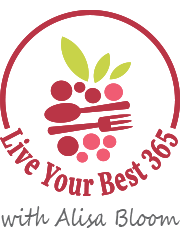Welcome to this second topic in the Eat Better NOW series, inviting you to eat better NOW instead of waiting until the new year (or some other grandiose event) to get you into gear! In case you missed this week’s Facebook live, you can watch the replay here.
Last week, we talked about sodium and how the shift to limiting salt in the diet is an important and relatively quick way to better your health NOW. The same is true for increasing potassium.
Sodium sits outside cells. Potassium sits inside cells to bring in the needed water and water-soluble vitamins. Ideally, we’re striving for both minerals in a 1:3, sodium to potassium, ratio. We need three times as much potassium for every amount of sodium.
Please don’t rely on potassium supplements! They can be dangerous to some people because potassium affects heartbeat rhythm. Enough said.
How can we reach that coveted 1:3 ratio of sodium:potassium?
First, the ratio depends on the foods we eat. Put simply, we should include more fruits and vegetables. Try this: double up on your vegetable servings at lunch and dinner. An increase in veggies will give you a great start on the recommended 5-8 servings recommended per day from fruits and vegetables (combined, by the way). Foods high in potassium include primarily unprocessed plant foods, like avocado, banana, beans, broccoli, dried fruit, potatoes, squash, dried fruits, tomatoes, and watermelon. A general serving size is 1/2 cup cooked or 1 cup raw.
The second aspect will depend upon your sodium sources. While it’s true that we want to add more potassium-rich foods, if you don’t decrease unnecessary sodium, you’ll find it harder to reach the 1:3 ratio balance.
You don’t have to postpone your path to better health! Challenge yourself slowly by increasing potassium-rich foods and reducing added sodium intake. We can all eat better NOW during this holiday season.
If you find food as medicine or functional nutrition interesting, join our Facebook community group, Food Sanctuary.
In health,

